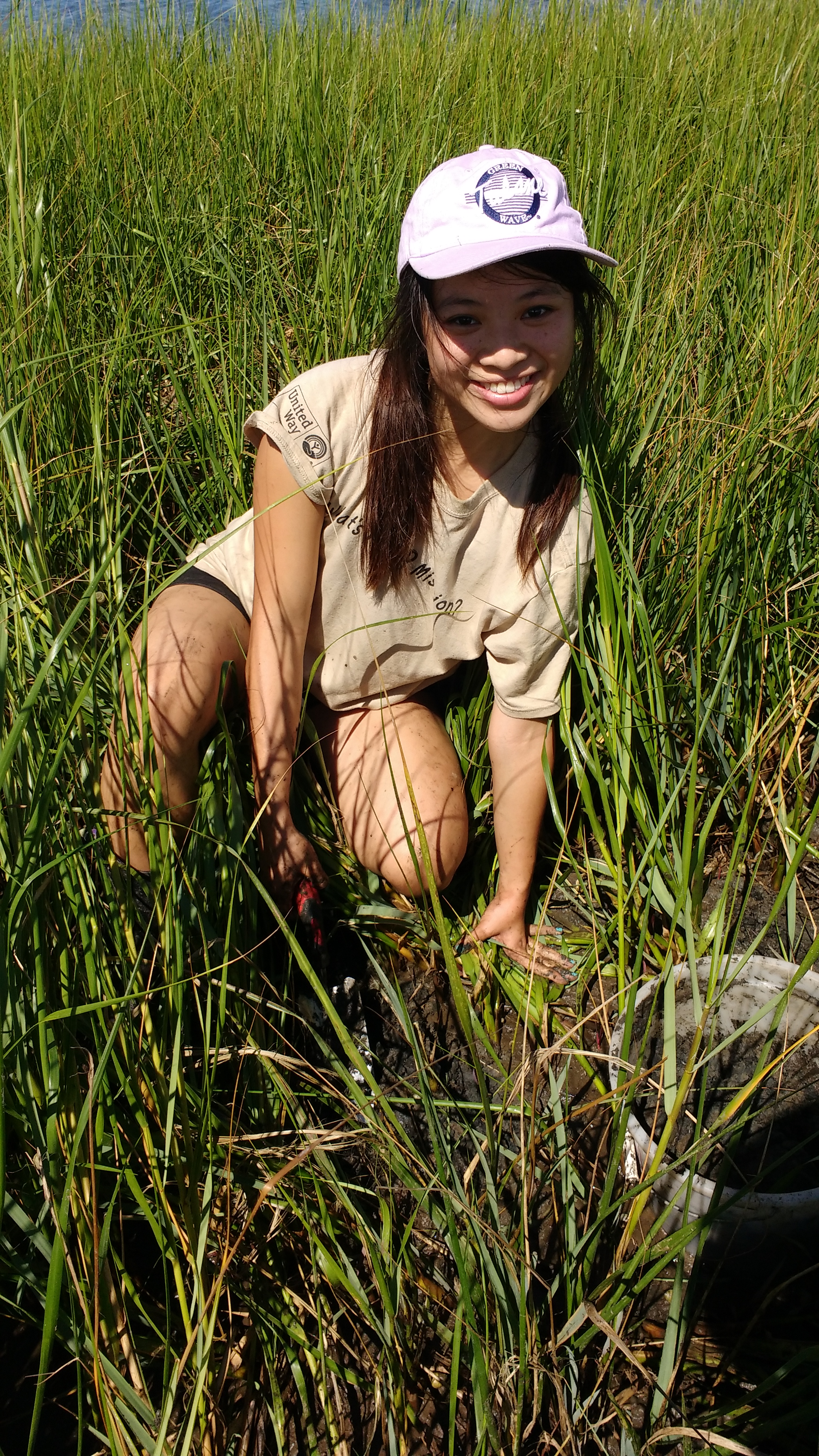September 11, 2016
Today was my first day out on the marsh! In one day, I became a gate-keeper, a field scientist, and briefly, a storm trooper but not the Star Wars kind. In the morning, Steve and I drove to Mardi Gras World to get the boat and hook it up to the back of our Tulane truck. Steve drove the truck and I hopped in and out of the truck to unlock all the doors and gates to get our boat. Upon seeing the boat, my early morning grogginess turned into restless excitement.

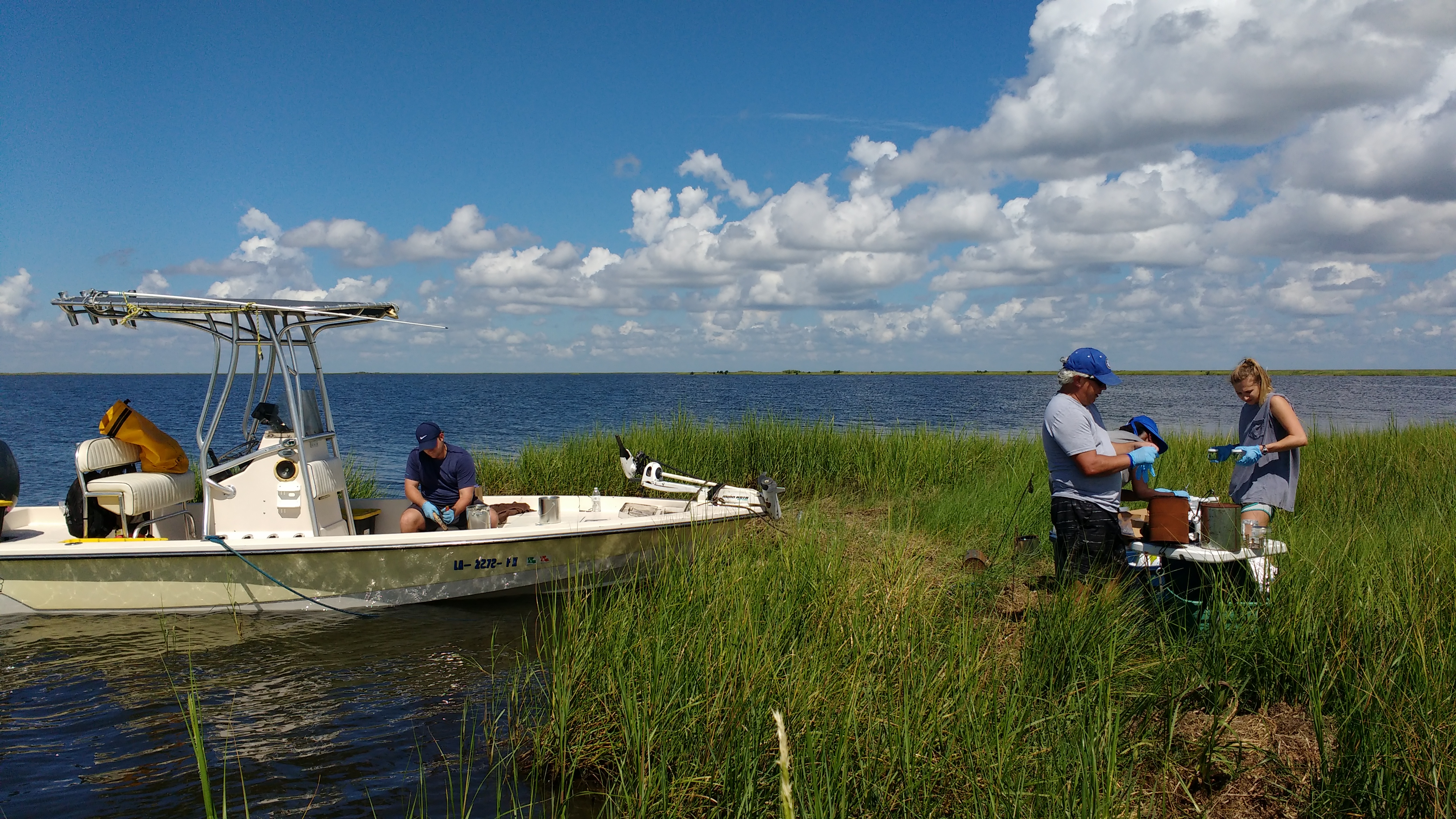
We met up with Dr. John Pardue, two grad students and another undergrad at Myrtle Grove Marina. We all climbed aboard the boat and zipped through the water. At first, we saw raised houses with fishing docks, but after about 15-20 minutes, residential life disappeared as we neared Barataria Bay.
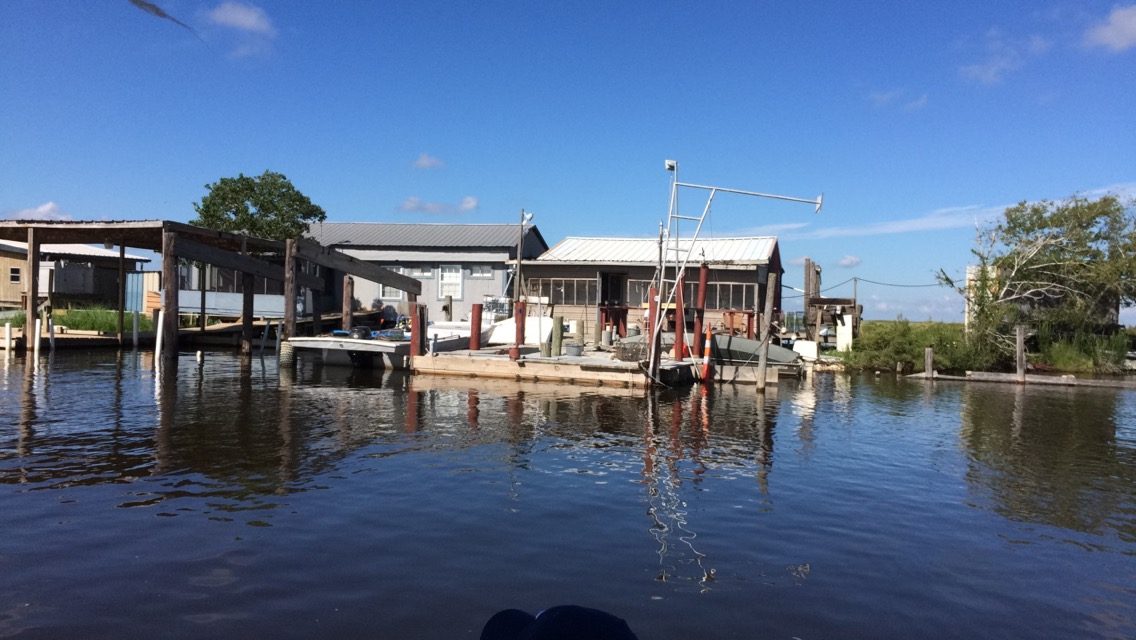
On either side of us were wide expanses of tall, marsh grasses, bristling with the wind, ushering us forward. I sat in the back of the boat, enamored with the landscape surrounding us – the sky was perfectly blue, the water glittered with sunlight, and the marsh grasses were layered with yellows, greens, and deep purples.
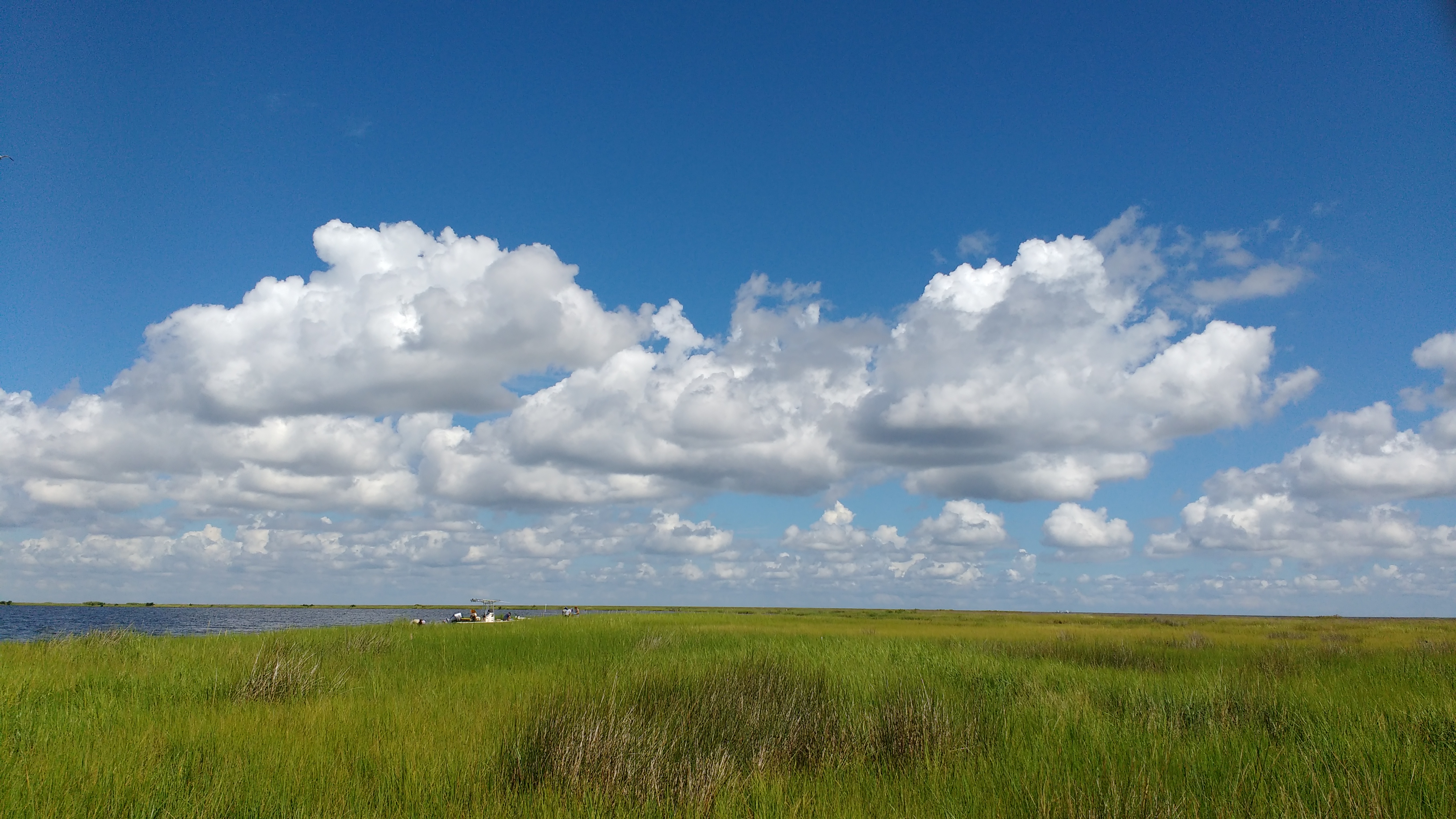


We were headed for Bay Jimmy, a pocket of Barataria Bay. After an hour of zipping through the marsh, we finally arrived at the site. I had some leaks in my rainboots, so as soon as I stepped on shore, I felt the gulf water and marsh mud ooze into the cracks. Just for some context – we were collecting soil on this trip to maintain the root microbial communities of our smooth cordgrass (Spartina alterniflora) growing in the greenhouse. Collecting soil was a bit difficult because we had to collect 10 gallons of soil, but limit ourselves to the top 4 inches of topsoil because we’re interested in the aerobic layer of soil.
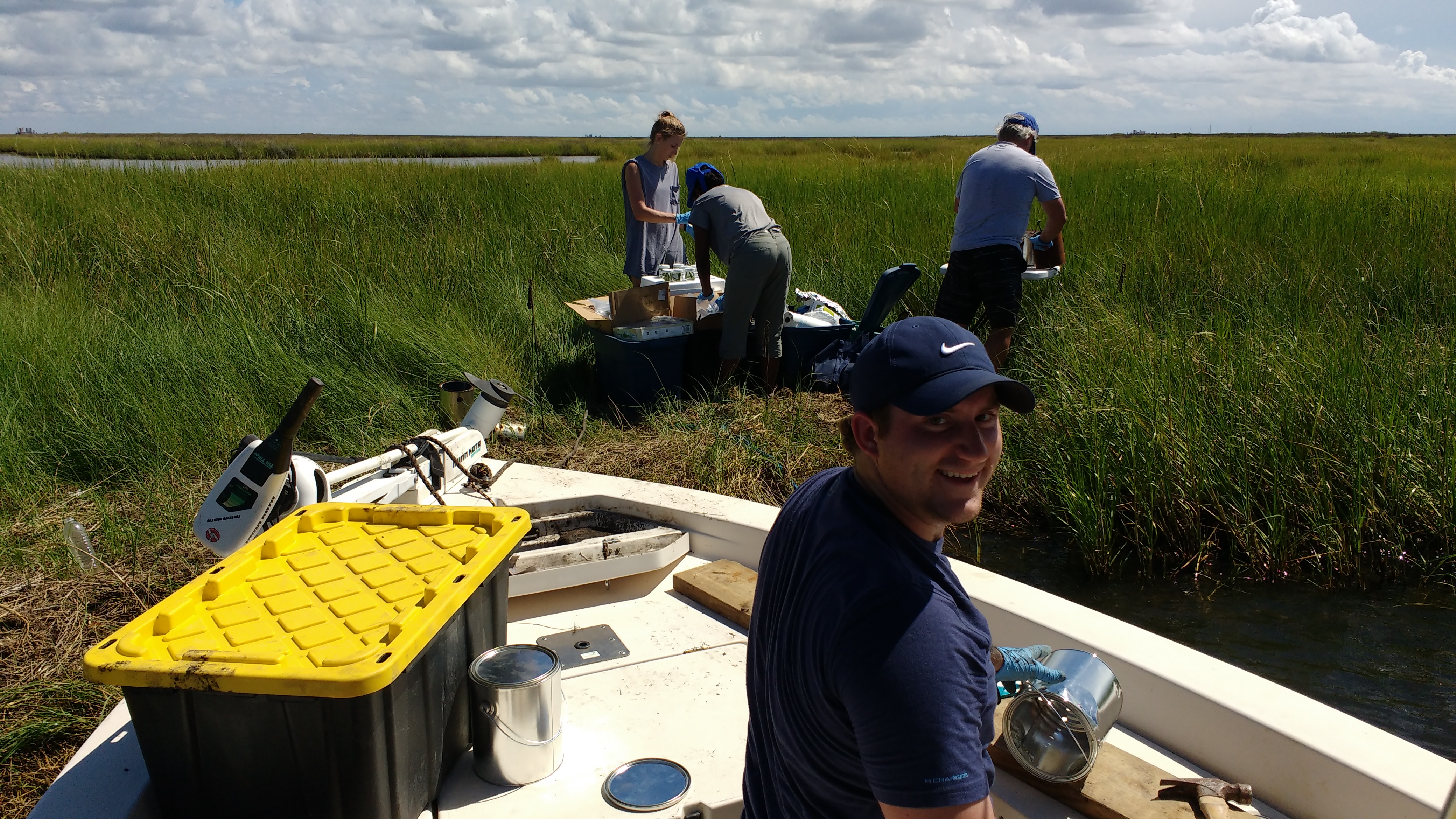
The marsh grasses were almost as tall as me and I truly felt one with nature as I stood in the grasses engulfing me. Caution – maybe wear goggles or sunglasses at least because the grass makes a *point* to show you who owns the place by poking your eyes. Steve came to check up on me every once in awhile, but I was lowkey worried he might not be able to find me!
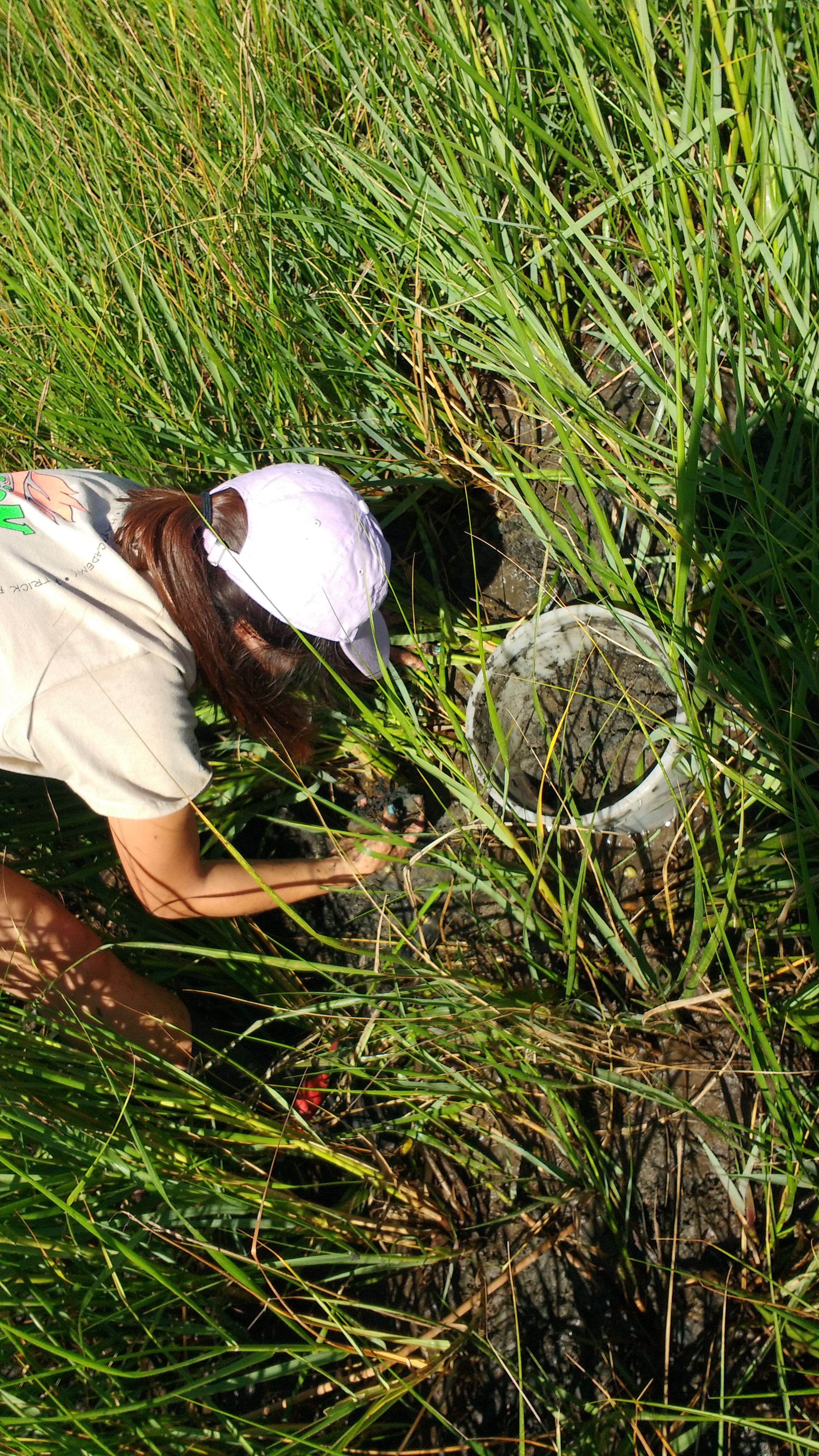
Finally, we reached our goal of 10 gallons of unoiled soil, took a lunch break, and then rode the waves to the oiled site. It was astonishing to see how even 6 years after the BP oil spill, the impact on the vegetation and shoreline were obvious. Compared to malleable, softer soil from the unoiled site, the soil at the oiled site was hardened and caked with oil. There was a patch of hardened soil mass right where we pulled up – and you could still see the rainbow glean of oil on its surface. The integrity of this section of the marsh was clearly compromised – there were holes, deep pockets where the waves continuously eroded the marsh and chunks of earth fell into the water. At this point, my feet were completely saturated in waterlogged boots, and the weather had started to pick up, so it was harder to collect soil because the waves kept washing in, making it murky and harder for us to retain the soil in our hands. Dr. Pardue called me over to examine the handful of soil in his hand, and pointed to formations that looked like black chewed-up gum. It turned out that they were beads of oil that got trapped beneath the hardened top layer of the soil. They felt like those gray rubber erasers for special drawing classes.
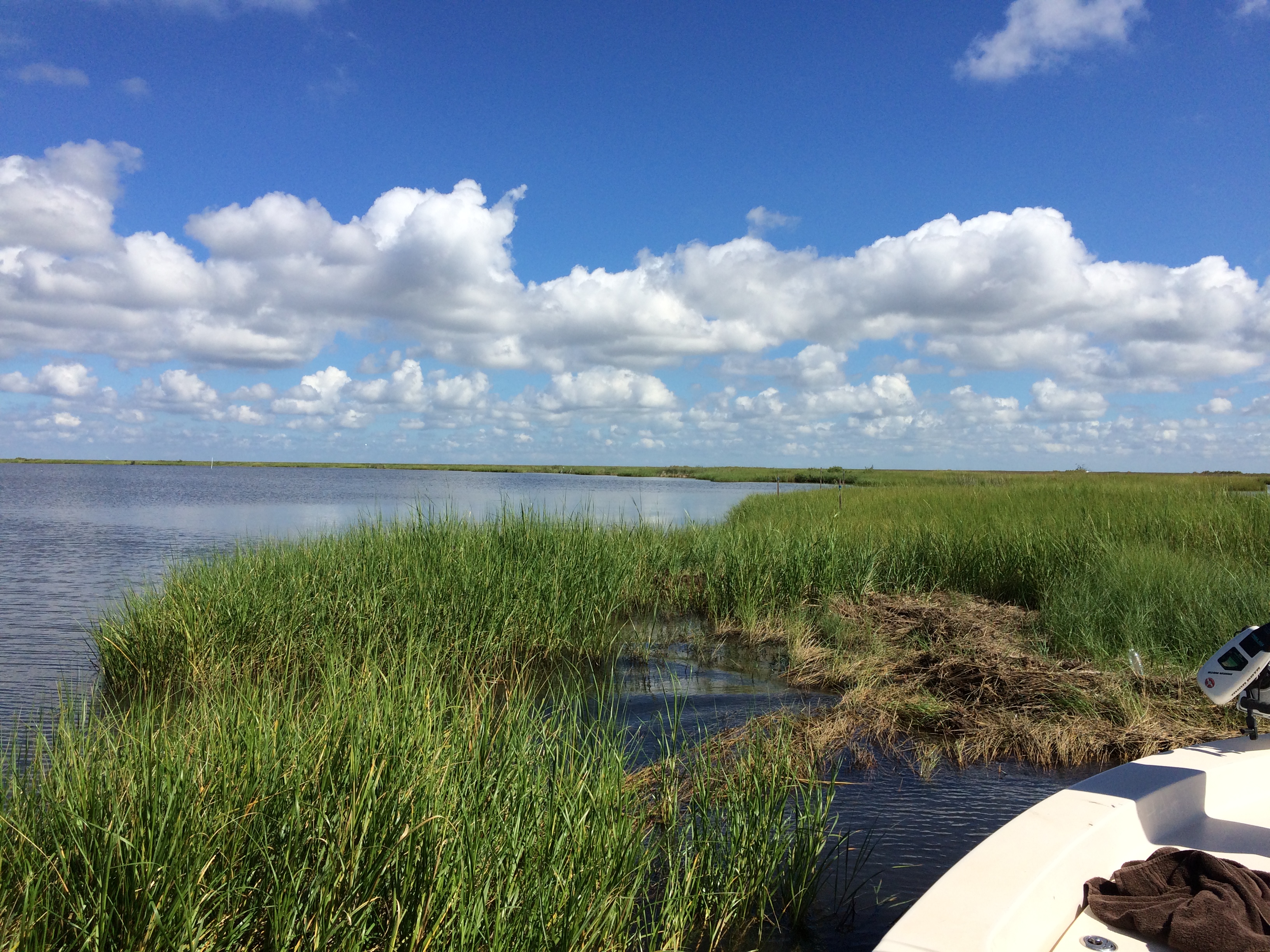
After we finished collecting 10 gallons of oiled soil, Steve and I walked inland to compare salinity of the inner marsh to the shore. I was trudging along casually, following Steve, when all of a sudden, I felt the ground beneath me drop, and I immediately sunk straight through the mud. I was stuck, swallowed mid-thigh by the marsh mud! I reached my hand out to Steve, but he couldn’t help me because he was too busy laughing. “Focus all your energy on just getting one leg out!” he advised in between his laughs. I felt like a fish without water, squirming left and right, and flailing my a. Gripping onto the grass near me I leaned all the way to the right while pulling myself upwards, and then I heard a suction cup noise as my left leg finally came out. After I escaped the mud bath, we headed back to the boat and waited for the others to finish processing their samples.
A few licks of wind from it alerted us to the storm in the distance. None of us were very concerned because it seemed like the storm wouldn’t be coming our direction. While it didn’t, the wind and tides suddenly became stronger than we anticipated. Waves started crashing into our boat, flooding it with water, one wave after another. Steve and I grabbed our buckets, and starting frantically scooping the water out. Bucket by bucket, wave after wave! Just when we thought we had gotten most of the water out, a strong wave would come crashing in, drenching us with salty-water, and flooding our ankles. Luckily, John Pardue caught Storm Troopers Steve and Rebecca in the act.
Although I got trapped in the mud, got my eye poked by the grass, and was doused by the waves, I wouldn’t trade this experience for anything. Everything that happened made this trip that much more fun and I truly enjoyed every moment. What I love most about working in the Van Bael lab is that undergrads have the opportunity to go out in the field, which helps us to see the bigger picture and contextualize the laboratory work we do every day. I can’t wait to go out on the marsh again, hopefully next time with someone else who hasn’t been before!
